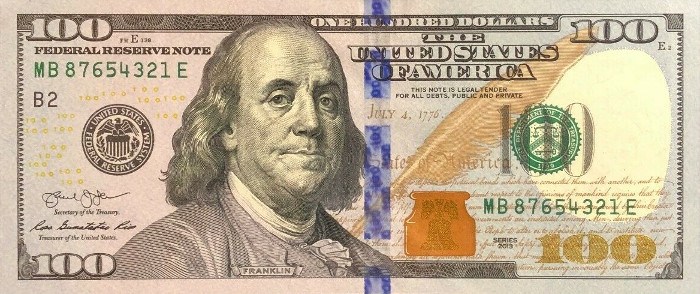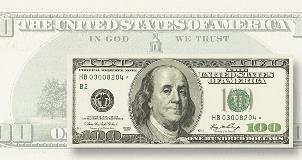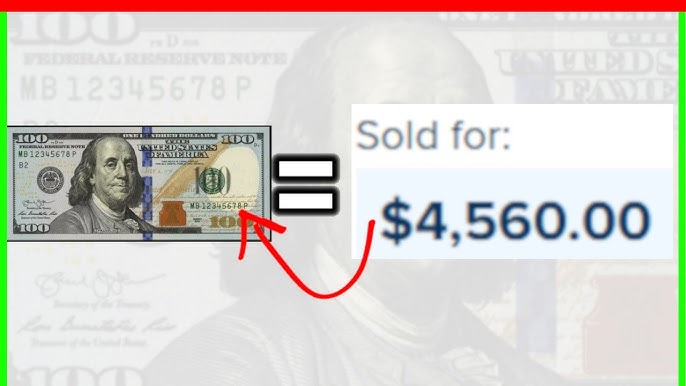The 2013 100 dollar bill value has become a topic of interest among collectors and enthusiasts of U.S. currency. While most 2013 one hundred dollar bills carry no significant premium over their face value, certain factors like star notes, condition, and serial numbers can make them worth more.
In this article, we’ll explore the worth of these bills, the features that set them apart, and what makes some more valuable than others.
An Overview Of The 2013 100 Dollar Bill
The 2013 series of the one hundred dollar bill is part of the broader redesign of U.S. currency, incorporating advanced security features to combat counterfeiting. Printed by the Bureau of Engraving and Printing (BEP), these bills are primarily distinguished by their serial numbers, signature varieties, and unique star notes.
The production of these bills was notable for its irregularities. In 2017, the BEP printed 35.2 million Series 2013 $100 notes for the Atlanta Federal Reserve Bank.

Interestingly, the 2013 series coexisted with the 2009A series, raising questions about the distribution and availability of these bills.
Specifications of the 2013 $100 Bill
- Denomination: $100 USD
- Type: Federal Reserve Note
- Signatures: Rios and Lew
- Series: 2013
- Paper Composition: 75% cotton, 25% linen
- Security Features: Security thread, color-shifting ink, watermark
These specifications are standard for modern U.S. currency, ensuring durability and security.
How Much Is A 2013 100 Dollar Bill Worth?
The 2013 100 dollar bill value largely depends on the bill’s condition and whether it’s a regular note or a star note.
- Circulated Bills: In circulated condition, these bills are typically worth face value, i.e., $100.
- Uncirculated Bills: In pristine condition with a grade of MS 63, these bills can fetch around $125.
- Star Notes: Star notes are replacement bills created during the printing process to replace defective ones. A 2013 $100 star note in uncirculated condition can be valued at around $150.
Understanding Star Notes
Star notes are distinguished by a star symbol following the serial number. These notes are scarcer than regular bills, making them desirable among collectors.

For example, a star note from the New York or Atlanta Federal Reserve Bank could command higher prices, especially if it’s in near-perfect condition.
Grading the 2013 One Hundred Dollar Bill
The value of a 2013 100 dollar bill can also be influenced by its grade. Professional grading services like Paper Money Guaranty (PMG) and PCGS Currency use the following scale:
- MS 63 Choice Uncirculated: A note with no signs of circulation, retaining its original crispness and centering.
- XF 40 Extremely Fine: Minimal handling with slight wear.
- VF 20 Very Fine: Noticeable signs of handling but no major damage.
Key Features That Influence Value
Several factors can increase the value of a 2013 $100 bill beyond its face value:
- Star Notes: As mentioned, these are rarer and more valuable.
- Low or Fancy Serial Numbers: Serial numbers with patterns like 00000001, 12345678, or 88888888 are popular among collectors.
- Printing Errors: Errors such as misaligned printing, ink smudges, or missing security features can make a bill more collectible.
- Federal Reserve District: Some districts printed fewer notes, making these versions more desirable.
Authentication: How to Tell if a 2013 $100 Bill Is Real
With the rise of sophisticated counterfeit currency, knowing how to authenticate a 2013 100 dollar bill is essential.
1. Security Thread:
Hold the bill up to the light to see a vertical security thread embedded to the left of the portrait. The thread reads “USA 100” and glows pink under UV light.
2. Color-Shifting Ink:
Tilt the bill to see the numeral “100” in the lower right corner change from copper to green.
3. Watermark:
A faint image of Benjamin Franklin appears when held to the light.
4. 3D Security Ribbon:
The blue 3D ribbon contains images of bells and “100s” that shift when the bill is tilted.
Interesting Facts About The 2013 Series
The series was printed in both Washington, D.C., and Fort Worth, Texas.
The introduction of the 2013 series coincided with ongoing production of the 2009A series, adding an element of mystery.
Some bills were produced for the New York Federal Reserve Bank in 2014 but did not enter circulation for years.
Common Errors and Their Impact on Value
Error notes from the 2013 series are particularly valuable. Some known errors include:
- Misprints: Ink smears or missing elements.
- Offset Printing Errors: Designs that are printed on the wrong side of the bill.
- Mismatched Serial Numbers: Rare instances where the two serial numbers on the bill do not match.
Collectors often pay a premium for such anomalies, especially if the error is unique.
Why Collectors Are Interested in the 2013 Series
The allure of the 2013 100 dollar bill lies in its quirks and anomalies. From missing notes to unexplained production overlaps, this series intrigues both novice and experienced collectors. The presence of star notes, printing errors, and unique serial numbers adds to the excitement of tracking down these elusive bills.
Conclusion: Is Your 2013 $100 Bill Worth More?
In most cases, a 2013 100 dollar bill value will match its face value unless it’s uncirculated, a star note, or has an unusual serial number. Checking for authentication features, consulting grading services, and staying informed about collector trends can help you determine whether your bill is worth more than $100. If you have a star note or an error note, you might just have a valuable piece of modern currency in your possession.

